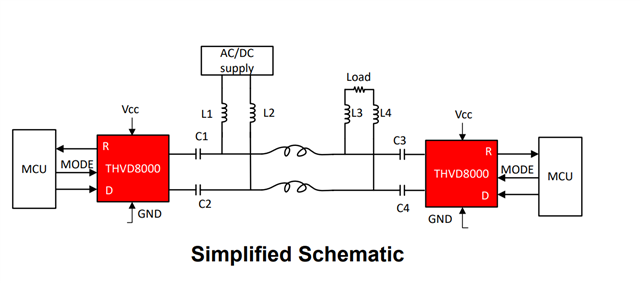Other Parts Discussed in Thread: THS6222, THVD8010
Tool/software:
Hi,
in my Building Automation / HVAC application Imight have up to 30 nodes, the protocol is Modbus 9600b/s, the power cable maximum lenght could be 300 meters.
I would like to know if the THVD8000 can be used in such an application where, instead of using the 4 wires Modbus RTU cable to interface the several sensors and thermostats with the Control Unit, you can use the power line (230V). Or the 24VDC?
Thanks.
Michele Ammendola




